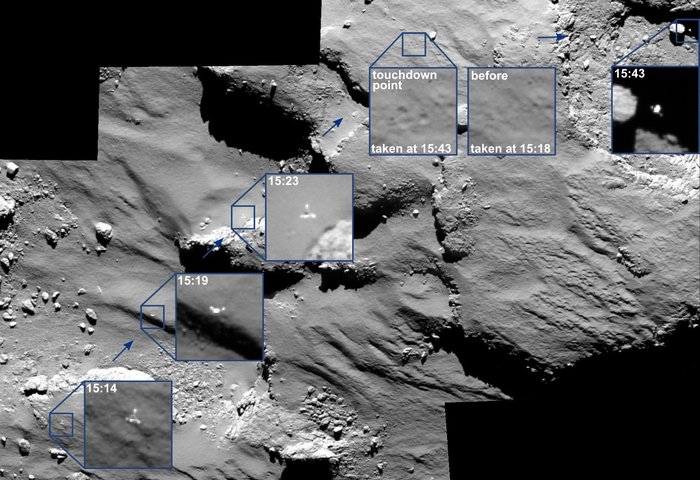
Europe’s intrepid and plucky Philae spacecraft has detected organic molecules on the surface of a comet, after successfully completing history’s first-ever soft landing on a comet and subsequently surviving two harrowingly unplanned bounces before finally coming to rest, barely a week ago.
Since organics are the building blocks of life, their in situ discovery marks a breathtaking achievement for the history-making mission of the Rosetta orbiter and Philae lander to investigate comet 67P/Churyumov–Gerasimenko.
The European Space Agancy’s (ESA) Philae robotic probe touched down safely on the dust covered, icy surface of the distant comet in a heavily shadowed spot beside a cliff on Nov. 12, after a gutsy 10-year interplanetary trek through space while traveling some 500 million kilometers (300 million miles) from Earth at 41,000 mph on a mission of cutting-edge science to elucidate our origins. Did comets play a role in the origin of life on Earth?
The science team leading the Philae probe confirmed the discovery of organics in a statement from the DLR (Deutsche Luft und Raumfahrt or German Space Agency), which heads the consortium funding the lander.
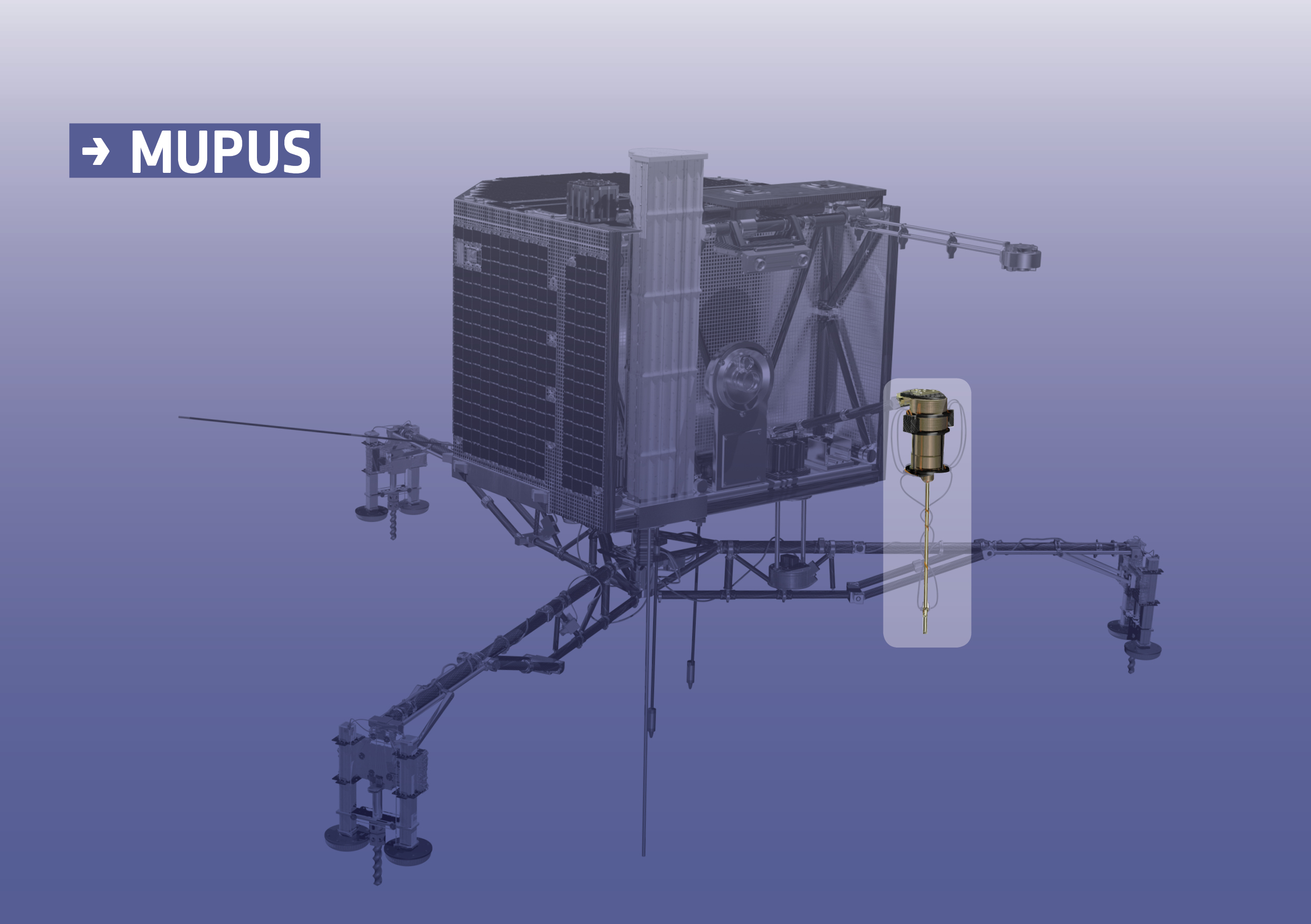
Philae successfully transmitted unprecedented science measurements and data for some 60 hours after surviving the unplanned triple touchdown on battery power alone, before finally entering hibernation mode on Nov. 15 due to insufficient sunlight impinging on the power generating solar arrays.
The small 100-kg (220-lb) Philae is a mini laboratory equipped with 10 state-of-the-art science instruments that photographed, sniffed the atmosphere, drilled, hammered, and studied Comet 67P/ Churyumov-Gerasimenko in detail during the mission’s Primary Science Phase, which was controlled and monitored from the DLR.
“We have collected a great deal of valuable data, which could only have been acquired through direct contact with the comet,” said DLR’s Philae Scientific Director, Ekkehard Kührt.
“Together with the measurements performed by the Rosetta orbiter, we are well on our way to achieving a greater understanding of comets. Their surface properties appear to be quite different than was previously thought.”
Comets are the pristine leftover remnants from the formation of our Solar System some 4.5 billion years ago.
Therefore, comets could hold clues to the origin of life on Earth, since they brought significant quantities of water and organic molecules to the early Earth as it was evolving.
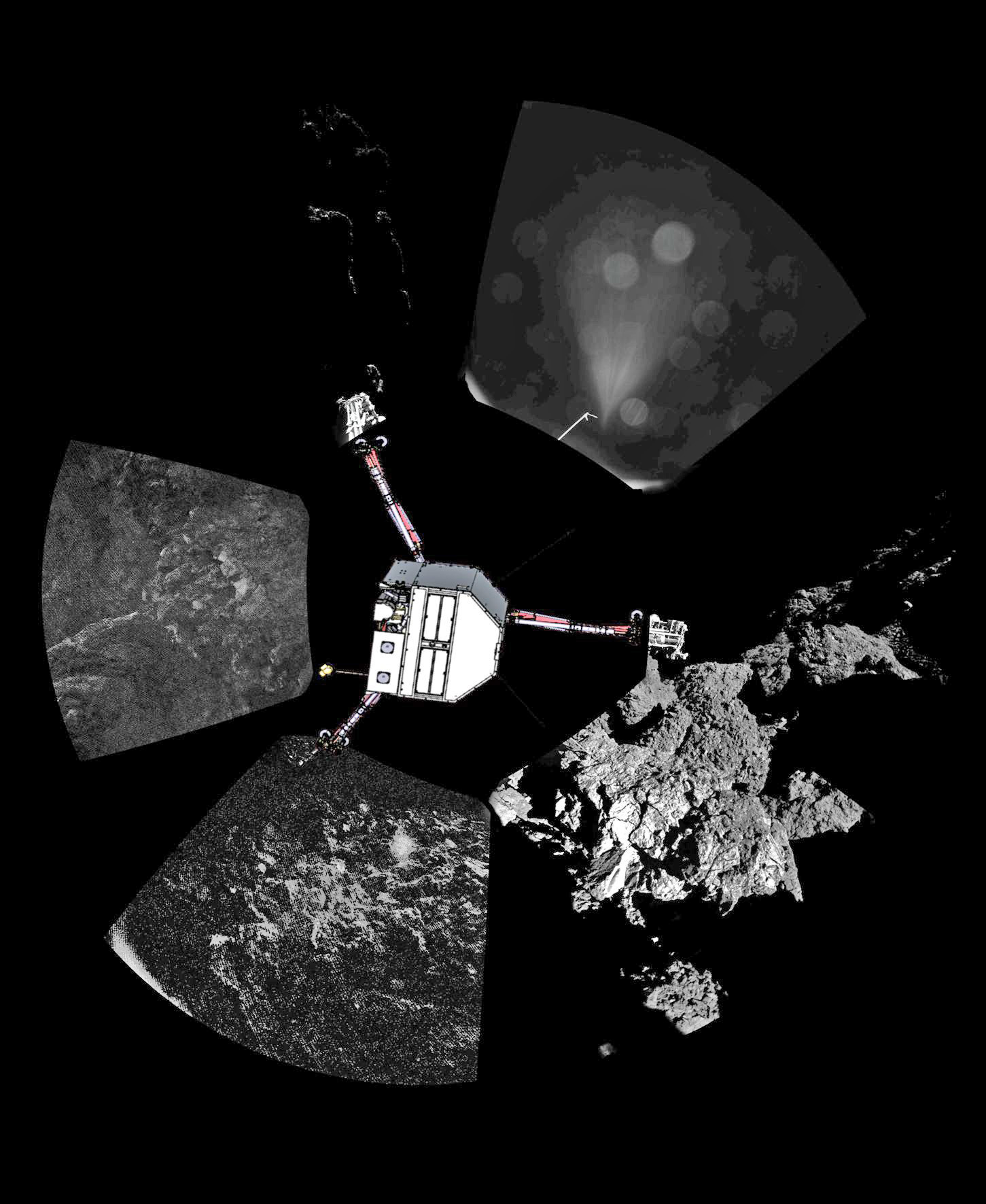
Only very preliminary results have been released so far, and they are extremely exciting.
The next step entails a lengthy and complicated data analysis from all the measurements sent back to Earth.
Philae is outfitted with a sophisticated drilling experiment known as SD2, which stands for the Sampling, Drilling, and Distribution subsystem, and can gather subsurface samples from as deep as about 23 cm.
SD2 was designed to deliver soil samples to the pair of onboard gas chromatographs named COSAC and PTOLEMY and the microscope.
DLR says that the SD2 drill was activated and transported samples to the oven, but can’t say yet what force the drill used or whether the samples were actually analyzed by COSAC.
COSAC, or the Cometary Sampling and Composition experiment, can specifically detect and identify complex organic molecules from their elemental and molecular composition, according to an ESA factsheet.
The PTOLEMY gas chromatograph’s goal is to measure isotopic ratios of light elements.
“We currently have no information on the quantity and weight of the soil sample,” says Fred Goesmann from the Max Planck Institute for Solar System Research.
“However, COSAC was able to ‘sniff’ the atmosphere and detect the first organic molecules after landing. Analysis of the spectra and the identification of the molecules are continuing.”
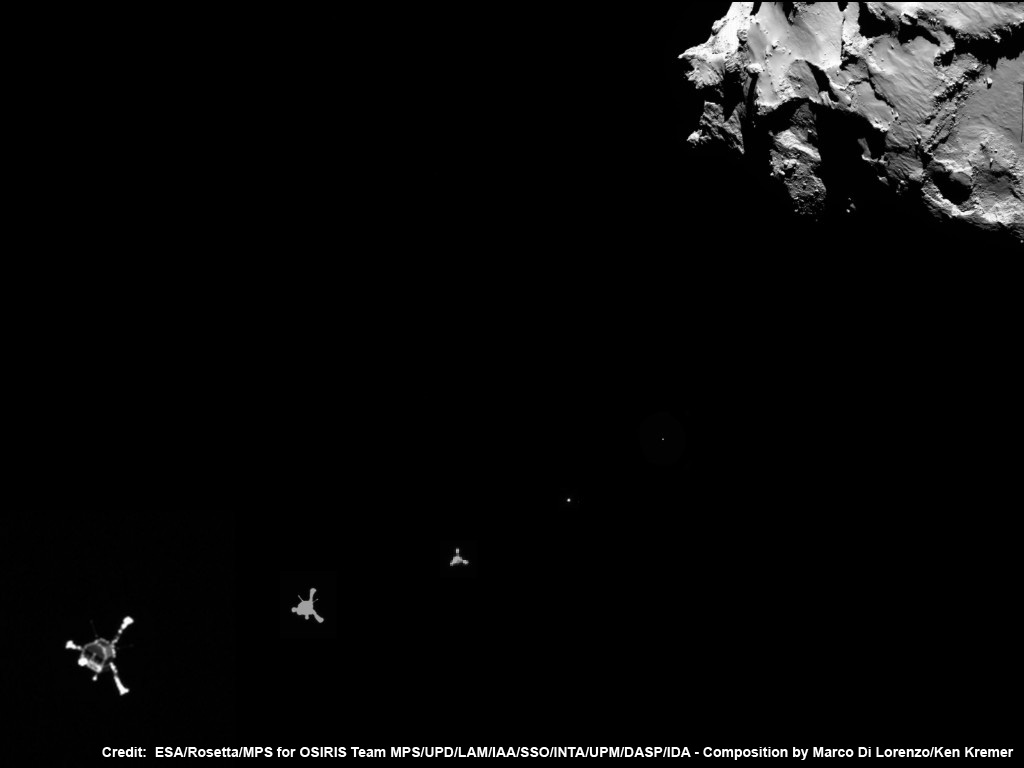
Philae journeyed along, piggybacked on the Rosetta mothership to a highly precise drop off point for the uncontrolled seven hour descent to comet 67P.
Rosetta’s high-resolution OSIRIS narrow-angle camera captured a series of breathtaking images clearly showing the three-legged Philae as it approached and then bounced up from its first comet touchdown on Nov. 12, 2014. It was space borne for nearly two hours before the second touchdown and another seven minutes before the third and final touchdown.
Comet 67P measures only 4 kilometers (2.5 mile) wide. Philae was targeted to land on the “head” of the bizarre two-lobed comet while it was rotating once about every 12.4 hours.
The OSIRIS mosaic above was captured over a 30-minute period spanning the first touchdown. The timing of each image is marked on the corresponding insets and is in GMT.
A comparison of the touchdown area shortly before and after first contact with the surface is also provided and shows clear evidence of the touchdown event when compared with an image taken previously, according to an ESA description.
Rosetta’s was 17.5 km from the comet’s center or roughly 15.5 km from the surface when the OSRIS images were taken. They have a resolution of 28 cm/pixel and the enlarged insets are 17 x 17 m.
The MUPUS (Multi-Purpose Sensors for Surface and Sub-Surface Science) instrument also delivered exciting results about the surface temperature, as well as measurements that the surface was coated in a thin layer of dust covering very hard ice.
MUPUS hammered a probe down into the comet’s subsurface. It is also equipped with sensors on the lander’s anchor, probe, and exterior to measure the density, thermal, and mechanical properties of the surface.
“We have acquired a wealth of data, which we must now analyse,” said MUPUS principal investigator Tilman Spohn from the DLR Institute of Planetary Research in a statement.
“Only the thermal sensors and accelerometers in the anchors that should have fixed Philae to the comet’s surface were not used, because they were not deployed during the touchdown.”
“However, the MUPUS thermal mapper, located on the body of the lander, worked throughout the descent and during all three touchdowns.”
The MUPUS thermal probe recorded a temperature of –153°C close to the surface at the final landing site. But the probe’s sensors found a 10°C temperature drop after the probe was deployed to the surface.
“We think this is either due to radiative transfer of heat to the cold nearby wall seen in the CIVA images or because the probe had been pushed into a cold dust pile,” says Jörg Knollenberg, instrument scientist for MUPUS at DLR.
But MUPUS apparently could not penetrate very deep in the limited time available.
“Although the power of the hammer was gradually increased, we were not able to go deep into the surface,” Spohn explained.
Nevertheless, it was able to measure the strength of a comet’s surface for the first time.
“Looking at the results of the thermal mapper and the probe together, the team have made the preliminary assessment that the upper layers of the comet’s surface consist of dust of 10–20 cm thickness, overlaying mechanically strong ice or ice and dust mixtures,” according to ESA.
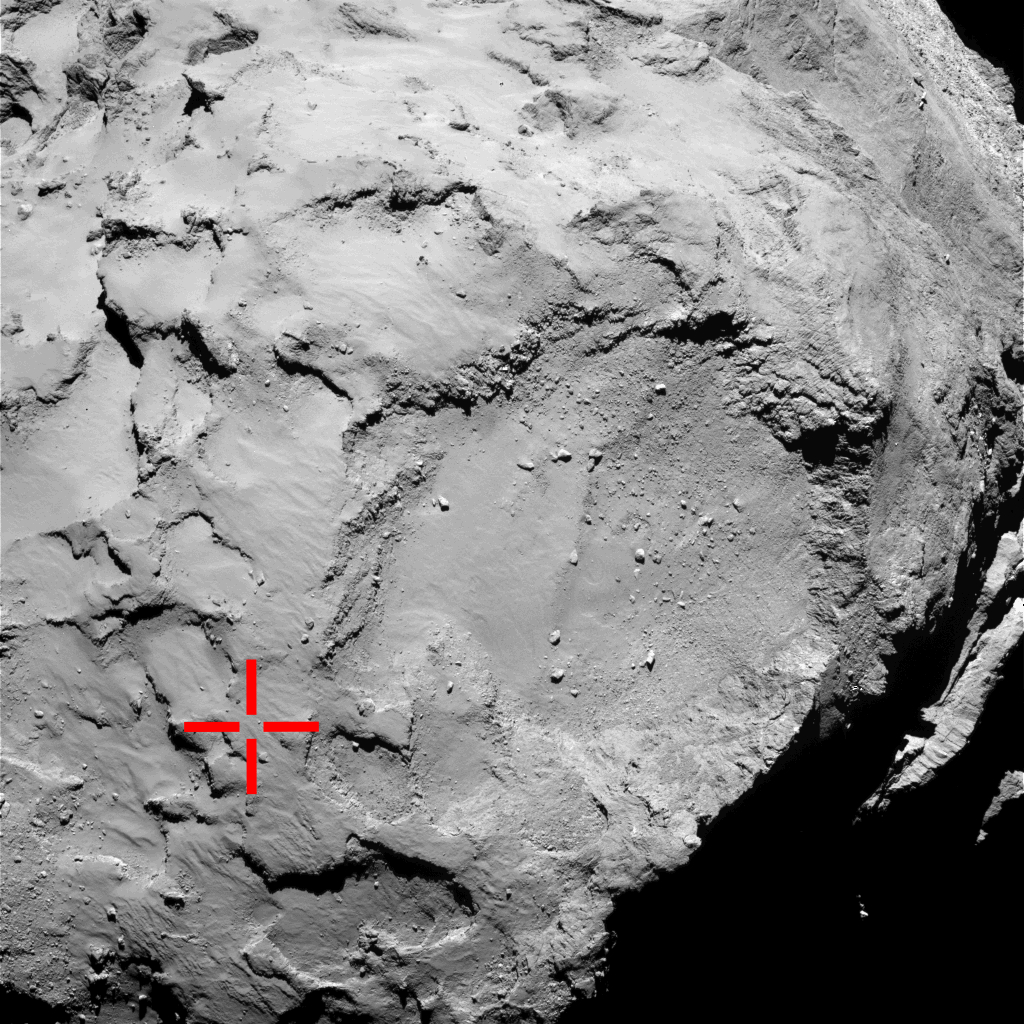
“It has been a huge success, the whole team is delighted,” said Stephan Ulamec, lander manager at the DLR German Aerospace Agency, who monitored Philae’s progress from ESA’s Space Operations Centre in Darmstadt, Germany, this past week.
“Despite the unplanned series of three touchdowns, all of our instruments could be operated and now it’s time to see what we’ve got. Prior to falling silent, the lander was able to transmit all science data gathered during the First Science Sequence.”
“This machine performed magnificently under tough conditions, and we can be fully proud of the incredible scientific success Philae has delivered.”
Philae’s last transmission received via the Rosetta mothership early Saturday CET/late Friday EST at 01:36 a.m. CET Nov. 15/7:36 p.m. EST Nov. 14.
In a last ditch effort to extend its life, engineers successfully commanded the lander to lift its body by about 4 centimeters and rotate some 35° to move the solar arrays to a position where they could receive a bit more solar energy.
But just as the last science data was sent back to Earth, Philae’s power rapidly depleted and it went into hibernation mode.
At its final landing site, the lander is only receiving about 1.5 hours of illumination per comet day versus the six hours of sunlight it would have received at the original Agilkia landing site.
Engineers will continue to regularly listen for a signal and try to contact it. Chances may improve later in the mission, as the comet approaches closer to the Sun and illumination time increases.
“We still hope that at a later stage of the mission, perhaps when we are nearer to the Sun, that we might have enough solar illumination to wake up the lander and re-establish communication,” added Ulamec.
Stay tuned here for continuing developments.
Want to keep up-to-date with all things space? Be sure to “Like” AmericaSpace on Facebook and follow us on Twitter: @AmericaSpace
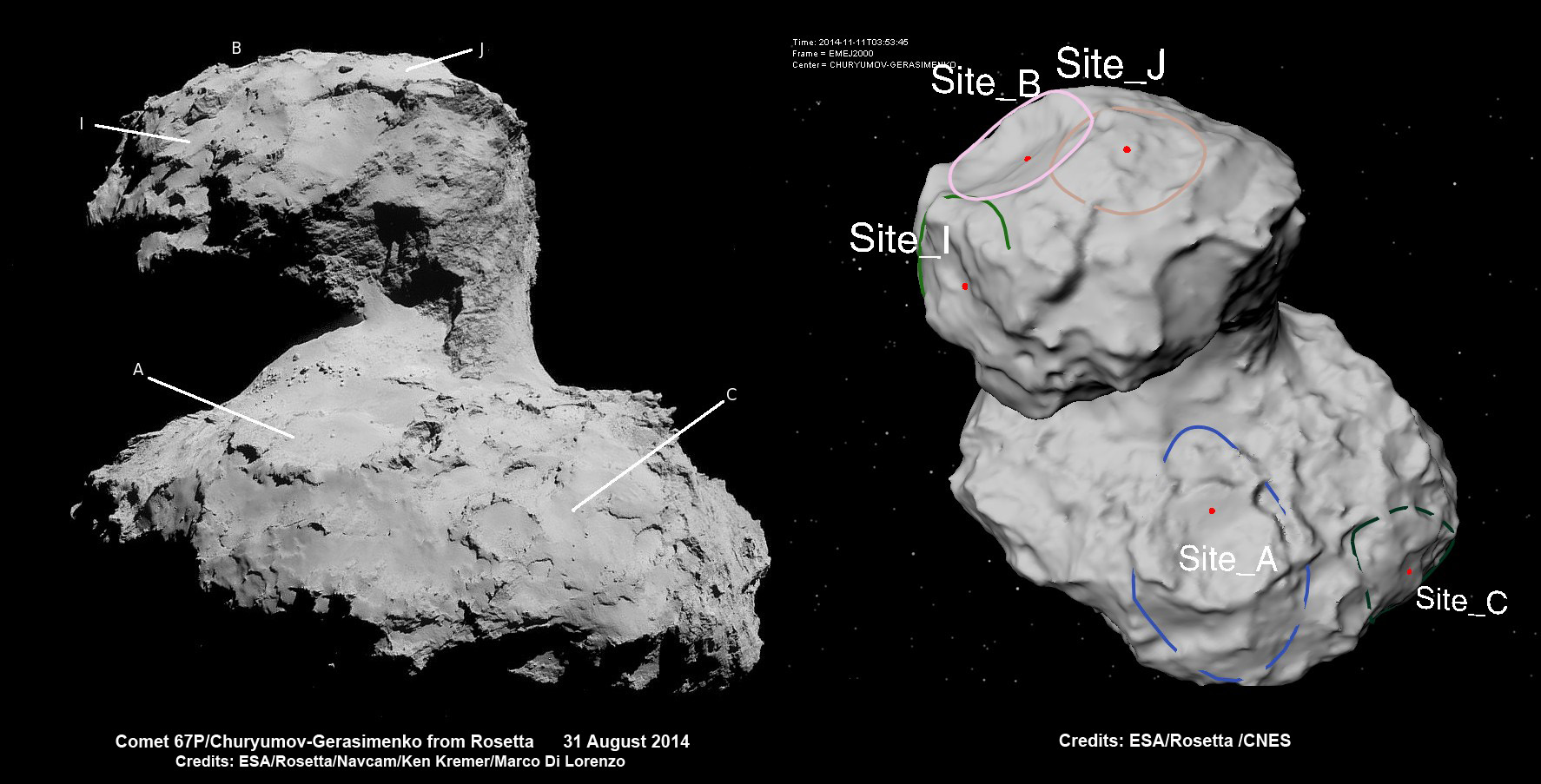
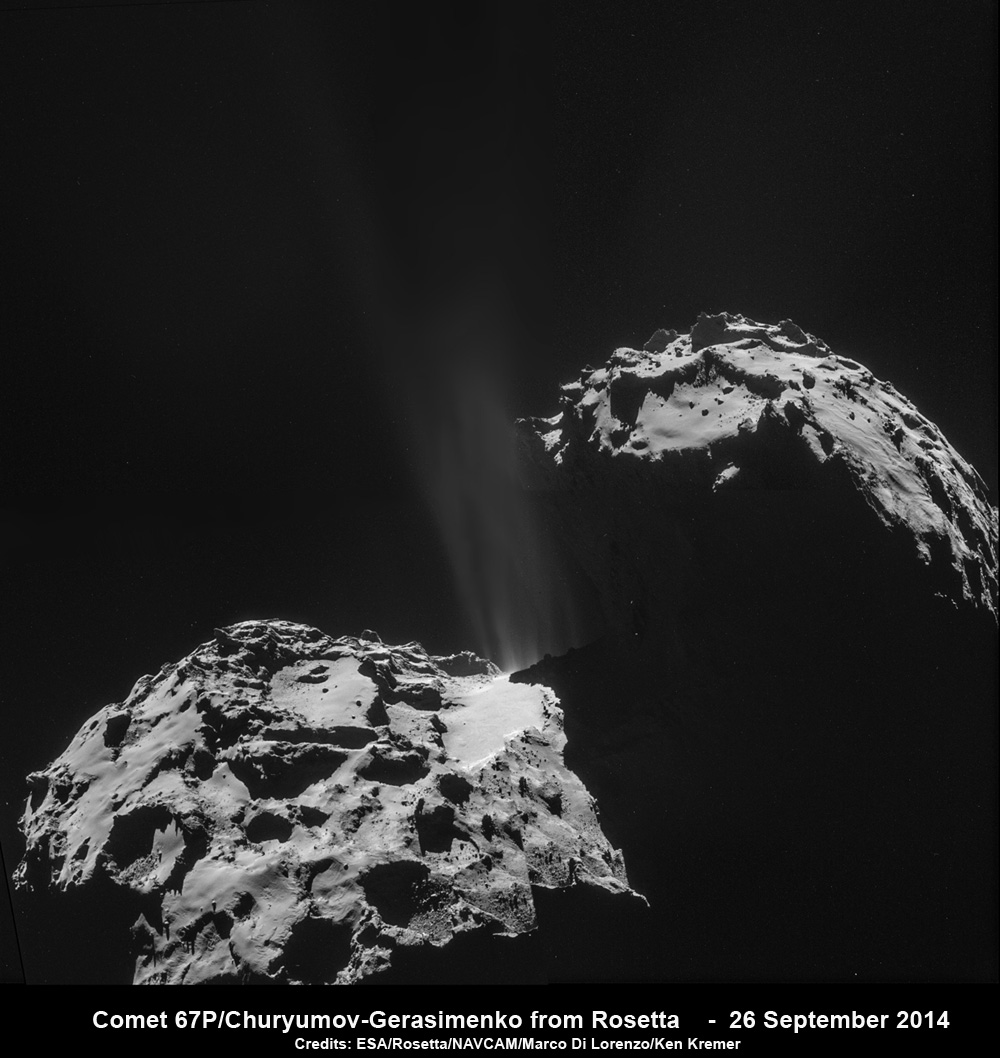




What a great accomplishment; I do not have the words to describe my joy ….. well done.
An astounding find to be sure. It is inevitable that we will find such evidence elsewhere and we have only begun to scratch the surface.